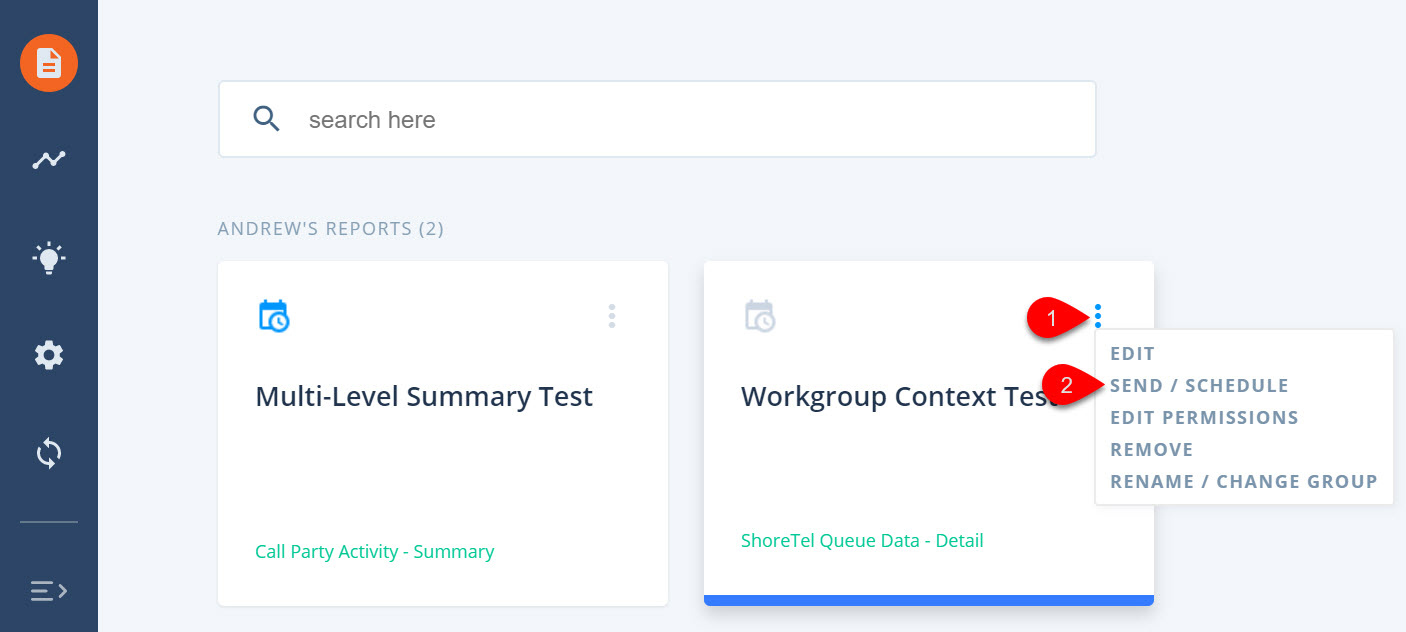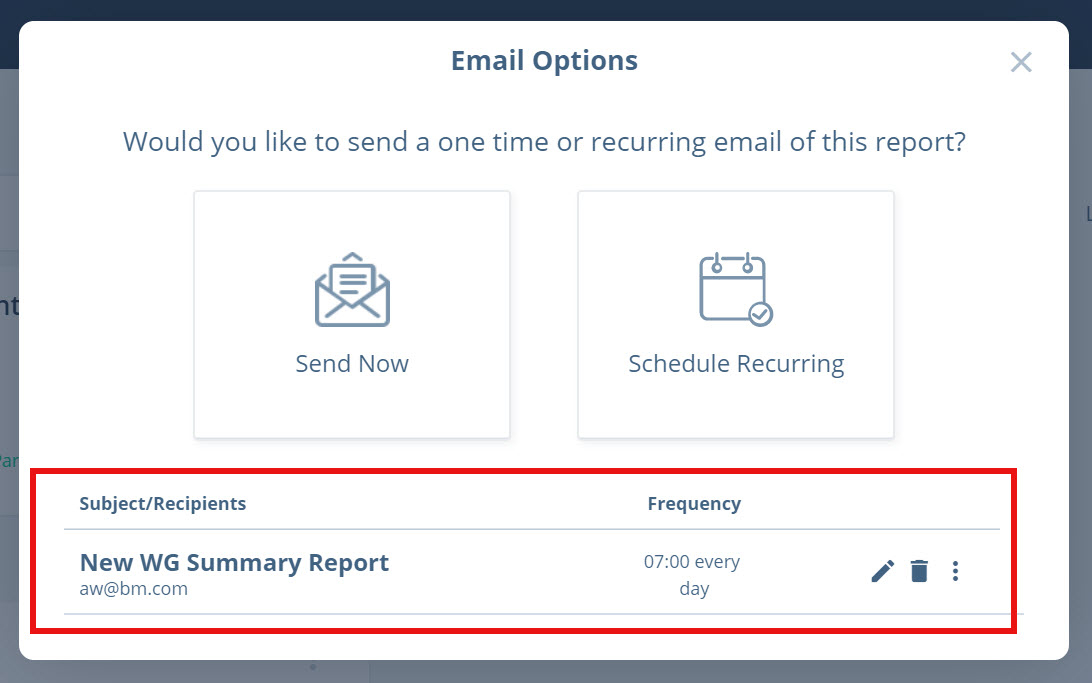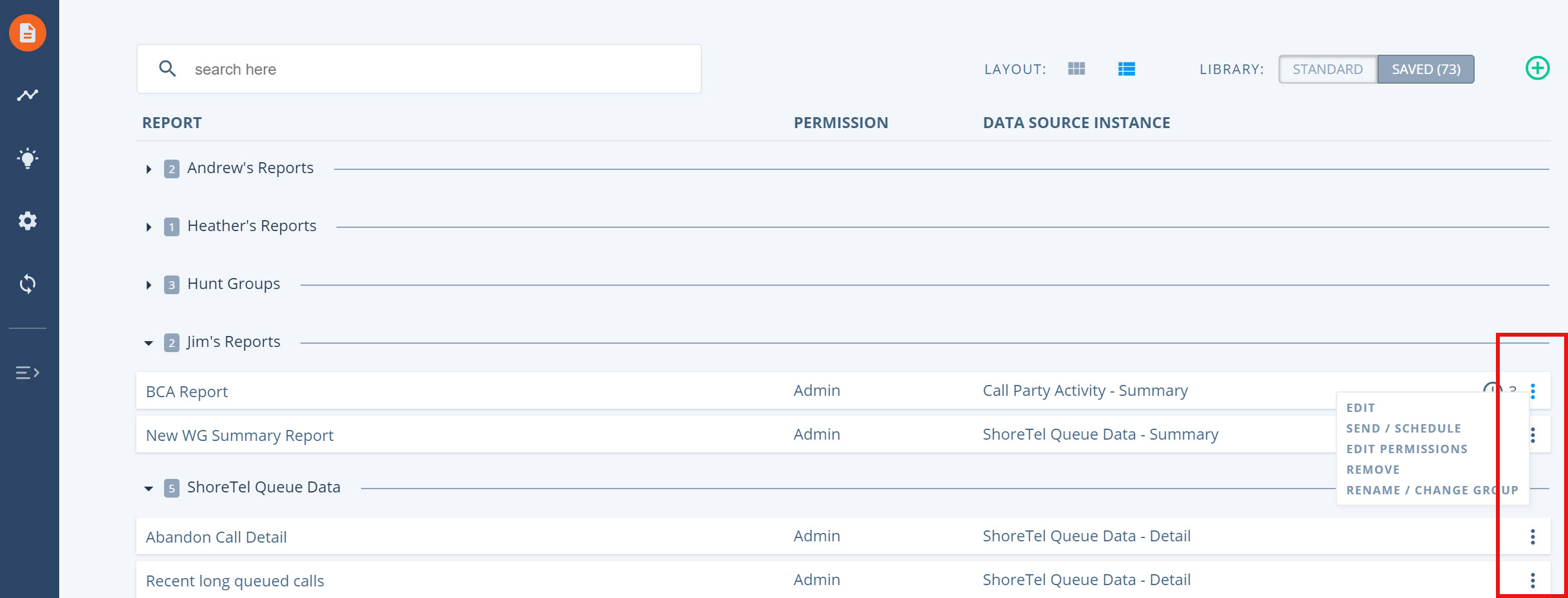Every role in an organization that depends on customer interactions can benefit from well-developed scheduled reports for their contact center data. Brightmetrics makes scheduling the delivery of unique reporting and dashboards incredibly easy. We’ve narrowed down the five key steps to building the best reports for your organization, maximizing the value and business insights for various stakeholders, particularly key decision-makers.
Step 1: Who Benefits the Most?
Identify the individuals who could benefit the most from scheduled reports. Many key players in your organization could use specific information delivered to their inboxes consistently. For example, upper management and executives will appreciate receiving analytics related to key performance indicators (KPIs) directly in their email. Additionally, team members and team leads responsible for daily and monthly performance goals will value the convenience of automated reports.
Want to take your automated reports to the next level? Follow the example of our most communicative clients, who have their own customers scheduled to receive reports to promote transparency and a common perspective on delivery of service to expectations, especially those set up on specific contractual SLAs. This is an amazing way to start a communication channel built on trust and transparency and fortify a solid relationship with your customers.
Pro Tip: To better define who should receive scheduled reports, consider what each person or team will do with the information. Without this consideration, your distribution of reports risks becoming white noise. Find ways to target and filter reports to the right audience.
Step 2: Choose Your Metrics
Decide which metrics to include in your scheduled reports based on the recipients and purpose. You can choose an overview of your entire team, individual performance, or workgroup performance. Consider the objectives you’re trying to accomplish and select metrics aligned with those goals. For example, focus on metrics like calls answered, abandoned calls, and response times to establish a common understanding of performance.
Pro Tip: Base the metrics you schedule on the business objectives you’re trying to achieve and select information that will best help your team members meet those objectives.
Step 3: Scheduling Your Report
Automated reports are valuable when they’re easy to set up and review. However, in many contact center communication platforms, the process can be clunky and burdensome. This often leads organizations to rely on analysts and IT departments to handle advanced reporting requests and manage maintenance and distribution.
Brightmetrics streamlines this process by enabling you to select recipients, metrics, and schedules effortlessly. Additionally, you can apply extra layers and filters to customize the information according to your audience’s needs.
Step 4: Access Your Report
Accessing information and the scheduler in your dashboard is incredibly easy. Simply follow these steps to begin scheduling your reports:
1. From your Saved Reports, choose the three dots menu on the report you want to schedule. Select “Send/Schedule” and choose “Schedule Recurring.”

2. Customize your options and filters, then click “Apply” to set up the schedule. (For a more in depth review of these options, visit our support article.)

3. You can delete or edit the schedule anytime, even transferring ownership to another user within your Brightmetrics account.

Step 5: Maintenance
One of the often-overlooked considerations of scheduled reports is a cadence of review and maintenance. The best way to avoid this oversight is to simply add report maintenance to your change management checklist for personnel, operational changes, and organizational restructuring. Adjust reporting when team members change positions, departments, or leave the organization. Determine the frequency of report delivery based on the needs of your audience.
Pro Tip: A good rule of thumb is to send the tactical team (i.e. team leads, MBWA, agents) reports more frequently (i.e. hourly or daily) and strategic management reports less frequently (weekly or monthly).
If you’re looking for perspectives more often than on an hourly basis, consider REAL TIME Analytics™. Click here to watch our overview.
Wow!
We understand you need an easy and intuitive way to distribute the insights from your contact center data, so we created a way for our customers to automate emailing these perspectives on a regular cadence in an easy and quick manner.
Leverage our services for reporting that is easy to set up, effective, and automated, ensuring every user who needs the information receives it automatically. The report templates are useful for most situations, but it’s also very customizable for your specific needs. Additionally, the data is then easily available through the email or in a customized dashboard accessible right from the email and is incredibly easy to consume in that format or to pop into a preconfigured scorecard.
Brightmetrics scheduled reports are a consistent and effective way of getting valuable reporting and analytics metrics to you and your team when you need them.
Discover more at brightmetrics.com!




